Pros: High-style Camaro-inspired interior; excellent ride quality diminished only by the available 21-inch wheels; sharper handling than most rivals
Cons: Gets pricy with options; isn’t a “real” Blazer; boring V6; disappointing interior materials
When car enthusiasts see “Chevy Blazer,” many still think “Ford Bronco alternative.” That’s not the case with the reimagined crossover SUV we see here, but Chevy has imbued its midsize hauler with some reasonably sporty DNA and served it up in a package that offers a lot of practicality for the price — provided you don’t go crazy with options.
The Blazer competes with the Ford Edge, Hyundai Santa Fe, Honda Passport and, of course, GM’s own two-row midsize offerings, serving up a more substantial look and driving feel than what’s provided by the many compact SUVs on the market (although don’t necessarily expect more interior space). The Blazer may have wandered from its roots, but it’s now one of GM’s key nameplates and one bound to survive the coming EVpocaylpse with the future Blazer EV.
Interior & Technology | Passenger & Cargo Space | Performance & Fuel Economy
What it’s like to drive | Pricing & Trim Levels | Crash Ratings & Safety Features
What’s new for 2023?
This model year is the first noteworthy update we’ve seen to the Blazer since it debuted back in 2019. The changes are far from comprehensive, but it gets some minor visual updates alongside several cabin enhancements, including a standard 10-inch infotainment display, plus the expanded availability of adaptive cruise control. Apart from some updated wheel options and a new “Nightshift Blue” finish (photos unavailable), the Blazer is otherwise unchanged for 2023.
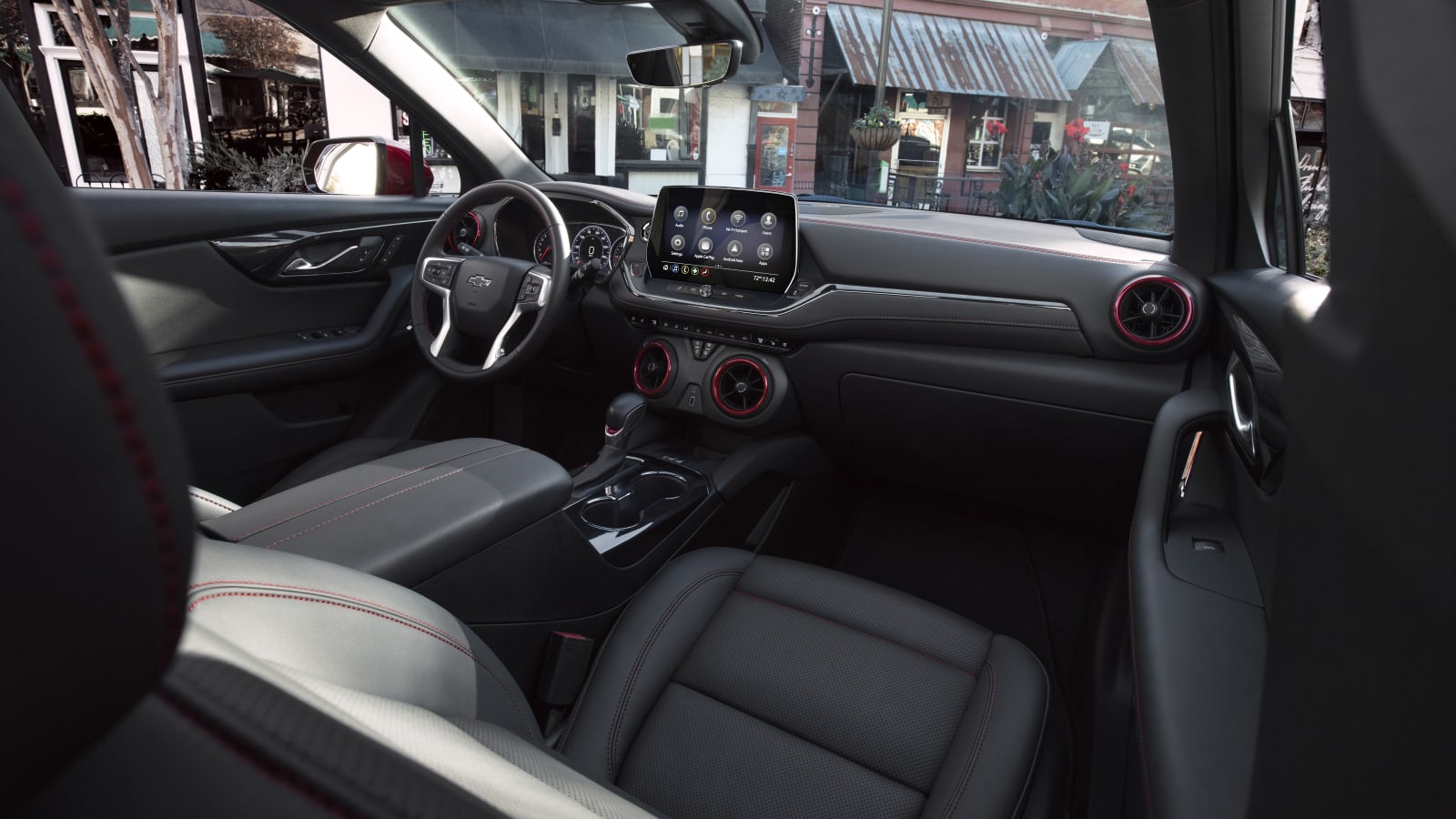
What’s the Blazer’s interior and in-car technology like?
On the one hand, the Blazer interior impresses with its Camaro-inspired design elements — note the rotary air vents/climate controls in particular — that make it look as special inside as it does on the outside. Unfortunately, the quality of materials used is disappointing given the Blazer’s price point. That’s especially the case with the Premier and RS trims that can top $50,000, but even lower trim levels are no nicer than compact SUVs (Mazda CX-50, Honda CR-V) that cost much less when similarly equipped. Quite simply, the Blazer either needs a lower price or a ritzier interior.
At least the Blazer’s infotainment offerings are better and more abundant than most. Every version gets a 10-inch touchscreen, Apple CarPlay, Android Auto, 4G LTE in-car WiFi, OnStar and four USB ports, including a USB-C port (the small one). That touchscreen is pretty easy to use with big, clear icons and a sensible menu structure and its now paired with wireless device charging.
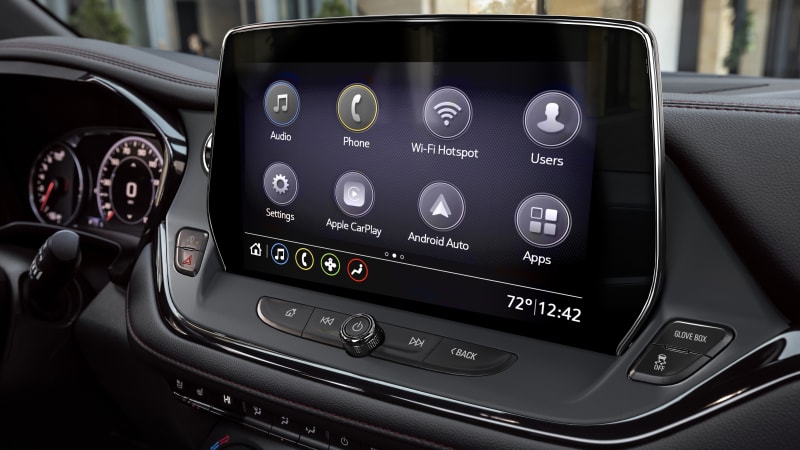
How big is the Blazer?
The Blazer is a midsize crossover, with exterior dimensions that put it in the camp of such vehicles as the Ford Edge, Jeep Grand Cherokee and Toyota Venza (the Honda Passport also attends that camp but is far more spacious than the Blazer). However, rear seat legroom at 39.6 inches is only similar to larger compact SUVs like the Honda CR-V and Toyota RAV4, and it has less headroom. That sleek, low roof may result in your hair grazing the headliner, and with the panoramic sunroof, you might even need to slouch or utilize the seatback’s ample recline.
The back seat does slide generously, making it easy to bring kids closer to those in front or free up extra cargo space. That’s a good thing, since its on-paper cargo figures are unremarkable. There’s 30.3 cubic feet with the seats raised and 64.2 when they are lowered completely flat thanks to a cleverly engineered seat bottom (see cargo video below). By contrast, the biggest compact models like the CR-V and Kia Sportage are in the mid 30s and 70s, respectively. Even Chevy’s own Equinox has only a single cubic foot less of maximum cargo capacity than the Blazer.
What’s the Blazer’s performance and fuel economy?
The Chevy Blazer comes standard with a 2.0-liter turbocharged inline-four that produces 228 hp and 258 lb-ft of torque. Front-wheel drive is standard, but all-wheel drive is optional. Like the V6, it’s paired to a nine-speed automatic. Fuel economy checks in at an estimated 22 mpg city, 29 mpg highway and 25 mpg combined with FWD. It drops to 22/27/24 with AWD.
Optional on the 2LT and 3LT (and standard on the RS and Premier) is a 3.6-liter V6 that pumps out 308 hp and 270 lb-ft of torque. It’s one of the quickest midsize crossovers as a result, hitting 60 mph in in the low 6-second range. Fuel economy is effectively the same whether you get FWD (19/27/22) or AWD (19/26/21). Note that the RS alone is available with a more advanced all-wheel-drive system with a torque-vectoring rear differential that improves handling in addition to further enhancing traction.
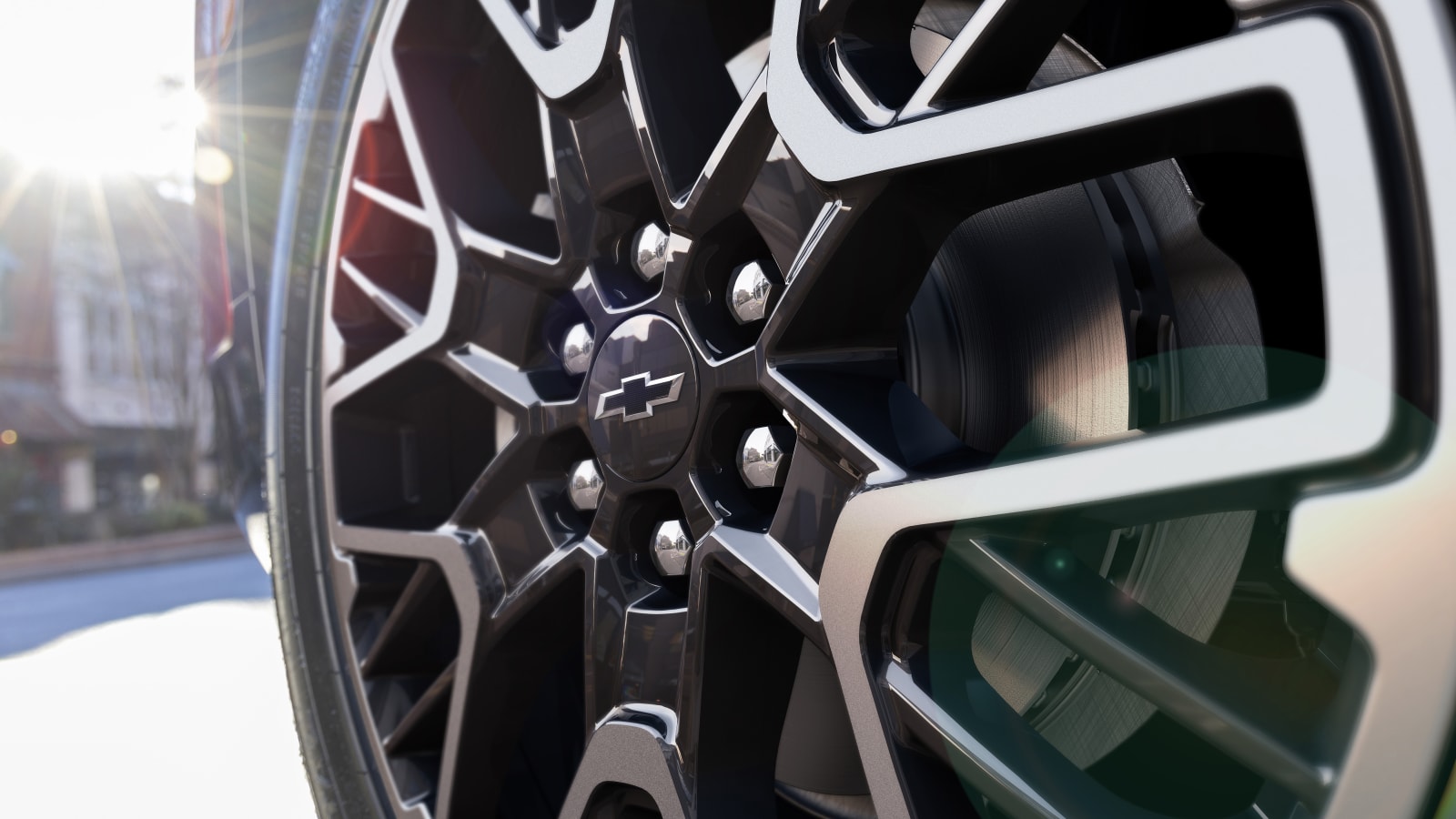
What’s the Blazer like to drive?
Just as the Blazer features Camaro-inspired looks, its driving experience is in the same spirit as Chevy’s beloved muscle car. Even a basic four-cylinder Blazer riding on 18-inch wheels will whip around a cloverleaf with poise and minimal roll. The sportiest RS trim stays even flatter thanks to a sport-tuned suspension and the torque-vectoring AWD system.
Unfortunately, power steering disappoints — at least for those expecting the Blazer to be the sporting SUV its styling implies. It just doesn’t engage enough or provide sufficient feedback. Ride quality is also a mixed bag. Even the Blazer on 18s has a firmer ride than we’ve come to expect from GM’s crossovers, but damping is quite good, and it’s perfectly acceptable for a vehicle with sporting intentions. On the other hand, the optional 21-inch wheels yielded a tiresome ride when driving between 25 and 50 mph on anything but perfect pavement. We couldn’t see the bumps, but we could sure feel them. It was admittedly more livable at highway speeds.
The turbo-four provides lots of low-end torque and a peppier dynamic that you usually get in a mainstream grocery getter, but the upgrade V6 provides strong performance that compares favorably to other V6-powered competitors. For the sport-tuned RS model, however, it just doesn’t provide the sort of soundtrack or amped up exhaust note that’s expected. The transmission is also lazy to react and doesn’t have paddle shifters to override those reactions. These may seem like nitpicks, but the Blazer RS is meant to be a sporty, performance-oriented SUV. Yet, for the same money, the Ford Edge ST goes a lot further toward that goal while boasting a whopping 30 more horsepower and 111 more pound-feet of torque.
What more can I read about the Chevrolet Blazer?
Chevrolet Blazer vs the 2021 Toyota Venza and other midsize crossovers
Read how the Blazer compares on paper to its key competitors.
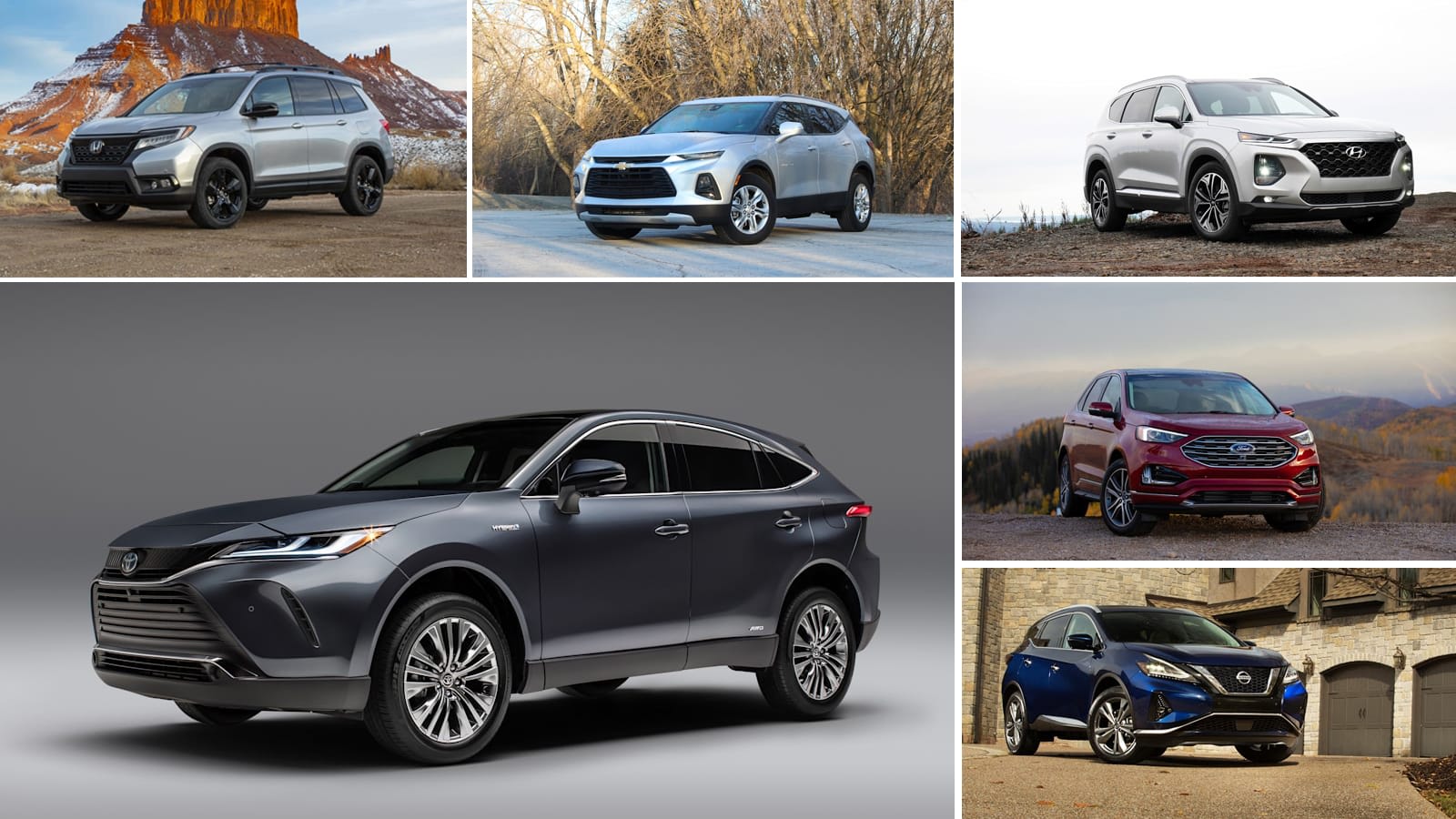
We review the 2020 Chevy Blazer 3LT with the 2.0-liter turbo engine
Our editors test the new turbo engine.
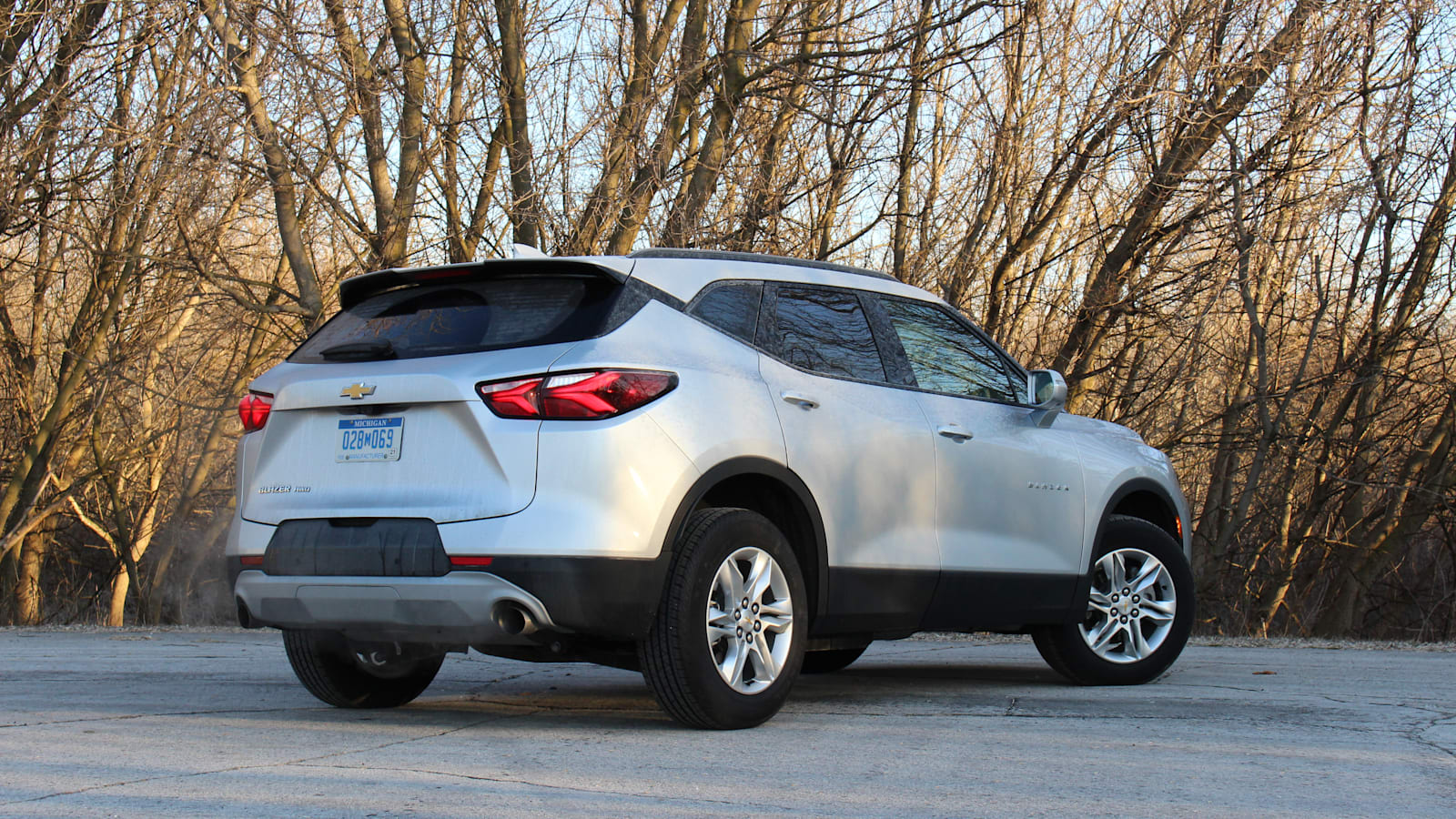
What features are available and what’s the price?
For 2023, the Blazer is offered only in 2LT, 3LT, RS and Premier trims; the previous L and 1LT models have been dropped from the lineup. Base price for the 2LT is $36,495 (including $1,395 for destination). The sporty RS trim is the enthusiast’s pick, but it’s among the most expensive, especially with the torque-vectoring all-wheel drive that makes it stand out in a crowd of less exhilarating competitors.
Here’s a full breakdown of pricing based on trim:
- 2LT FWD – $36,495
- 2LT AWD – $39,195
- 3LT FWD – $40,695
- 3LT AWD – $43,395
- Premier FWD – $44,195
- RS FWD – $44,195
- Premier AWD – $47,095
- RS AWD – $47,095
What are the Blazer’s safety equipment and crash ratings?
You no longer have to pay for the priciest Blazer to get access to the sort of accident avoidance tech features that come standard on most competitors. The Chevy Safety Assist package is included on all trims. It includes forward collision warning with automatic emergency braking and pedestrian detection, lane-keeping assist, a forward distance warning and automatic headlights. An advanced forward collision system that works at higher speeds and GM’s vibrating Safety Alert Seat are added with the Driver Confidence II package available only on the RS and Premier.
The government gave the Blazer perfect five-star crash ratings in all categories. At the time of this writing the Insurance Institute for Highway Safety had still only subjected the Blazer to two crash tests: moderate overlap and side. It received the best-possible rating of “Good” for both.
Related video:
